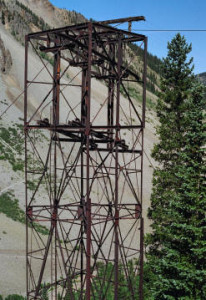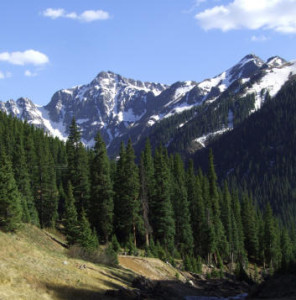How to Patent a Mining Claim
Mining claims, like homesteads, were created by a worker (in this case a prospector looking for gold, silver, lead, zinc, copper, etc.) who would go into the mountains and "stake his claim". At this point, the mining claim is not yet patented. The miner would have to perform a certain amount of work to the property (tunnels, roads, panning for gold, etc.) that could "prove" his claim. The standard was this: "Could a reasonably prudent man make a living from this property?" Remember that this was being done during an era of "Let’s go settle the west", so "reasonably prudent" was very often liberally construed. So long as he met the standards passed by Congress, the miner was then awarded a "Mining claim patent" for his land. At this point, he, like the homesteader, no longer had to perform his due diligence to the property. The land could be bought, sold and traded and the owner could build a house or a hotel or, as is the case in many Colorado mountain towns…even a ski area or two. I do not sell any unpatented mining claims (ones where the miner has never yet obtained a patent from the US Government).
Click here to view several US Mineral Survey Plats (surveys required for a patented claim)
By their very nature, mining claims are located in the rugged mountains because that is where God put the minerals around here. Consequently, claims tend to be steep with maybe a building spot or two for a nice cabin or camping site. Views tend to be spectacular, particularly if you come from the flatlands back east. Many claims are located above timberline (roughly 11,400 feet) and electricity is pretty rare. As to their exact locations on the ground, all of the claims had to be surveyed by a US Mineral Surveyor in order to obtain the patent. Often times those original corners (usually a 4×4 post set in the middle of a pile of stones) are gone. Claims that have corners that we can find cost more than ones where we are "guessing" as to their location. Access is another issue. Some claims, particularly placer and millsites, were located down lower as they needed to be accessible by wagons etc. As such, these tend to have roads running through them or close by. Mining claims with driveable access are worth more than ones that do not have that. Year round access would be worth the most, of course. To get a claim re-surveyed and have the corners marked, could be expensive. Estimates could range from $1,500 to $10,000 for very difficult ones.


